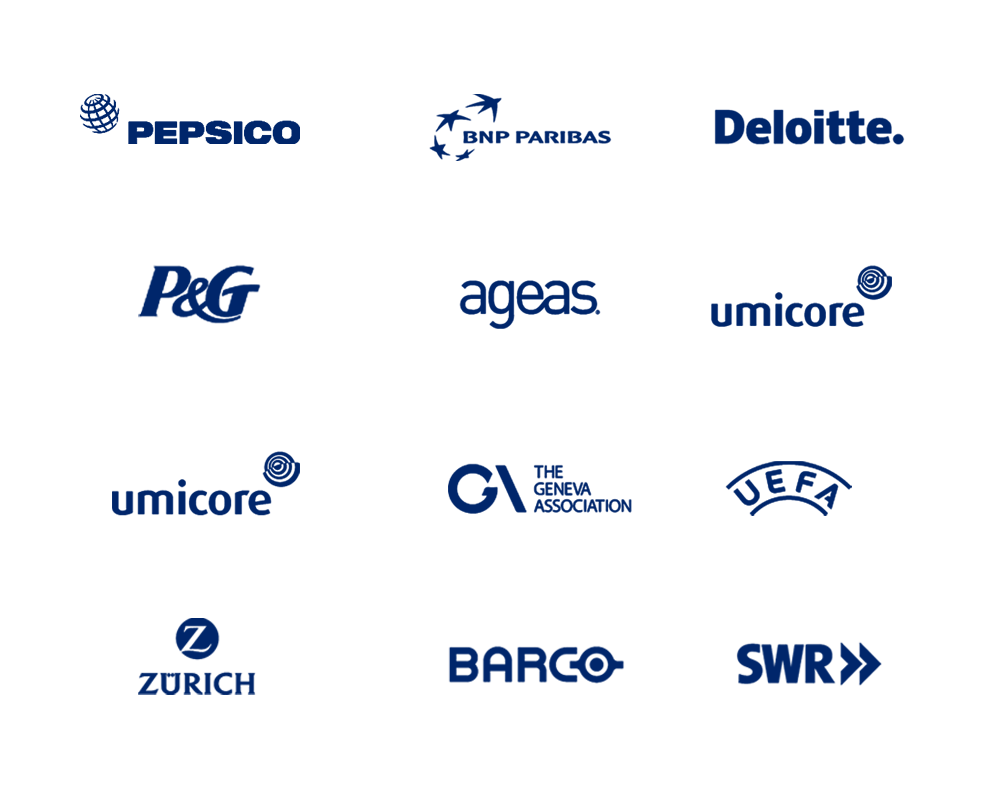The 5 Types of Scenario Planning for Businesses
It is becoming increasingly rare to find companies that are satisfied with their strategies for navigating the dynamic and unpredictable business environment of today.

Many companies feel unprepared or overwhelmed by how fast market dynamics evolve, making it challenging to keep pace with relevant changes. In response, a natural reflex may be to invest in innovative approaches and flexible planning methods to transform challenges into growth opportunities and competitive advantage.
However, choosing this method without a clear direction can have significant and long-lasting consequences. This raises a critical question: what is the best way forward in uncertain times?
Why scenario planning is important
One of the most effective strategies for exploring unknown territory is scenario planning. This method assists organisations in navigating through the unpredictable future. It involves anticipating and preparing for various potential outcomes, helping businesses to stay ahead of competitors and be flexible and resilient.
But know that scenario planning is not a one-size-fits-all approach. There are various types of scenario planning, each serving a unique purpose and offering distinct insights into the future. Understanding these types is essential for developing a comprehensive strategy that touches on all potential future scenarios.
The five types of scenario planning
1) Quantitative scenarios
Quantitative scenarios rely heavily on financial models to forecast future outcomes, focusing on both the most optimistic (best-case) and the most cautious (worst-case) scenarios. This way, they help organisations navigate uncertain markets. While these scenarios offer significant advantages, they also come with certain limitations, which we will list below:
Pros of quantitative scenarios:
- Data-driven decision-making: Quantitative scenarios provide data-driven results, helping decision-makers improve the accuracy of their decisions. They measure the effects of changing factors contributing to planning accuracy, such as market demand or cost fluctuations.
- Improved planning and adaptability: These scenarios allow for more comprehensive planning by considering different potential outcomes and strategies, leading to better decision-making. Additionally, the ability to quickly adjust strategy in response to changes ensures organisations remain competitive and financially stable.
- Strategic thinking: Quantitative scenarios encourage and develop strategic thinking by focusing on long-term implications and potential results. This asset is crucial for organisations looking to navigate uncertain markets with specific, measurable objectives.
Cons of quantitative scenarios:
- Overreliance on data: One potential drawback is the overreliance on historical and current data, which may not always accurately predict future trends. This reliance can lead to a false sense of security and potentially overlook emerging trends that are not evident in past data.
- Complexity and resource intensity: Developing and maintaining financial models requires significant resources, including specialised skills and software. This complexity can be a barrier for smaller organisations or those needing more in-house expertise, making it challenging to implement and sustain quantitative scenario planning effectively.
Tip: Don't let the complexity of quantitative scenario planning slow you down. Use Trendtracker's Trend Scoring to streamline your strategy development with ease.

2) Operational scenarios
Operational scenarios are practical frameworks businesses use to simulate real-world processes, challenges, and responses within their day-to-day operations. By creating detailed narratives or models of how their operations could unfold under various conditions, organisations can test the resilience of their operational strategies.
This approach focuses on applying strategies to real-life business activities, offering insights into potential improvements in efficiency and effectiveness.
Pros of operational scenarios:
- Improved operational efficiency: Operational scenarios let businesses identify bottlenecks and inefficiencies. By simulating different operational conditions, they can pinpoint areas for improvement, leading to more streamlined and cost-effective operations.
- Improved crisis preparedness: These scenarios prepare organisations for unexpected events by simulating crises and emergencies. This helps them develop and test response strategies to minimise operational downtime.
- Improved team collaboration and problem-solving: Simulating operational scenarios encourages team members to work together to solve potential problems, promoting a culture of collaboration and continuous improvement.
Cons of operational scenarios:
- Resource intensive: Developing and testing these scenarios can require time, human resources, and financial investment. Small—to medium-sized enterprises may find the cost and effort prohibitive.
- Limited by imagination and experience: The effectiveness of operational scenarios is often limited by the creators' ability to imagine possible situations and their experience. There's a risk of overlooking unforeseen challenges that were not anticipated.
- Potential for over-preparation: Focusing too much on preparing for specific scenarios may lead companies to invest heavily in solutions for problems that may never occur, hindering resources from other critical areas.
Tip: Streamline your operational planning with a touch of AI. Trendtracker's Smart Surveys bring you the real-time insights you need.

3) Normative scenarios
Normative scenarios are visionary blueprints organisations create to outline their ideal future state and the steps necessary to achieve it. Unlike predictive scenarios that forecast what might happen based on current trends, these scenarios focus on what should happen to reach specific goals.
This forward-thinking approach involves starting with the desired outcomes and working backwards to identify necessary actions to achieve these goals.
Pros of normative scenarios:
- Guides strategic vision: Normative scenarios help organisations articulate a clear vision of their desired future, serving as a guiding star for strategic planning. This vision-driven approach ensures that all efforts and resources are aligned towards achieving long-term objectives.
- Encourages innovation: By focusing on what should happen, rather than what is likely to happen, normative scenarios inspire creativity and innovation. Organisations are motivated to think outside the box and explore new possibilities that can bridge the gap between the present and their ideal future.
- Improves stakeholder engagement: These scenarios can effectively engage stakeholders by presenting a compelling vision of the future. This engagement is necessary to gain support and commitment from employees, investors, and partners, as it connects them emotionally and intellectually to the organisation's goals.
Cons of normative scenarios:
- Risk of unrealistic expectations: One challenge with normative scenarios is the potential to set unrealistic expectations. If the envisioned future is too far removed from current capabilities or market realities, it may lead to strategic missteps or disillusionment among stakeholders.
- Difficulty in implementation: Turning the visionary goals of normative scenarios into actionable plans can take time and effort. The gap between the ideal future and the present may require significant changes in operations, culture, or technology, which could cause challenges in terms of resources, time, and resistance to change.
Tip: Vision-setting is smoother with proper intel. Use Trendtracker's Trend Insights for a future that's not just imagined but informed.

4) Strategic management
Strategic management scenarios require a broader focus on examining a company's environment and looking at broader factors like the economy and customer behaviour. These scenarios combine insights from both quantitative and qualitative analyses to inform decision-making and strategic planning processes.
By considering a wide range of possible futures, companies ensure that they are well-positioned to adapt to navigating environments and meet customer needs effectively.
Pros strategic management:
- Improved strategic flexibility: Strategic management scenarios help organisations to quickly pivot their strategies in response to changing market conditions. This flexibility is needed in today's fast-paced and uncertain business environment, where the ability to adapt can be a significant competitive advantage.
- Informed decision-making: These scenarios systematically explore possible future states and provide a solid foundation for decision-making. Organisations can better assess the risks and benefits of different strategic options, which leads them to more informed and robust decisions.
- Future-proofing the organisation: Using strategic management scenario planning encourages organisations to look beyond the immediate horizon and consider long-term impacts. This approach helps companies anticipate changes, seize opportunities, and mitigate risks, ensuring long-term sustainability and success.
Cons strategic management
- Resource intensive: Creating strategic management scenarios is resource-intensive, demanding time, expertise, and financial investment. It requires input from multiple stakeholders and extensive research, which can be challenging for organisations with limited resources.
- Uncertainty and complexity: The inherent uncertainty and complexity of predicting the future can make strategic management scenarios overwhelming. There's a risk that organisations may become paralysed by many possible futures, leading to indecision or a scattergun approach to strategy that lacks focus.
Tip: Keep an eye on the horizon with Trendtracker's Trend Radar. Take a closer look at how it can guide your big-picture planning.

5) Exploratory scenarios
Exploratory scenarios encourage organisations to consider potential futures by systematically investigating how different factors, trends, and uncertainties could evolve and interact. By embracing uncertainty, these scenarios help businesses think flexibly and prepare for a diverse range of outcomes rather than predict a single outcome.
This approach is crucial for developing an adaptable and resilient strategy capable of withstanding future challenges.
Pros exploratory scenarios:
- Broadens perspective: Exploratory scenarios challenge conventional thinking and encourage organisations to consider different possibilities. This broadened perspective helps identify opportunities and threats that might not be evident through a traditional, linear approach to planning.
- Increases resilience: By preparing for multiple potential futures, companies can develop robust strategies across various scenarios. This preparation increases organisational resilience, as it reduces the risk of being caught off-guard by unexpected developments.
- Stimulates strategic innovation: The exploratory process can stimulate creative thinking and innovation in strategy development. It pushes organisations to think creatively about potential solutions and strategic moves that can be effective across different possible futures.
Cons exploratory scenarios:
- Resource and time intensive: Developing and analysing multiple exploratory scenarios can be resource and time-intensive. It requires gathering extensive data, engaging stakeholders, and conducting in-depth analyses, which may strain limited resources.
- Risk of analysis paralysis: Faced with many possible futures, organisations might find it challenging to decide on a specific course of action. This "analysis paralysis" can delay decision-making and hinder the ability to respond swiftly to immediate challenges.
Tip: Exploring the 'what-ifs' becomes easier with Trendtracker's Trend Board. Customise, analyse and anticipate everything in one place.

Conclusion
Organisations can create a strategic framework that prepares them for future trends, navigates uncertainties, and sets the stage for sustained success through various types of scenario planning. Mastering strategic foresight through these scenario-planning methods is key to thriving in a dynamic business environment.
However, the true test is in applying scenario planning effectively and resourcefully. That's where Trendtracker can help you out.

The AI-powered platform offers swift and insightful access to the data that underpins your strategic choices. This focused approach not only streamlines the process but also sharpens the precision of your planning, setting you up for a successful outcome.
We're here to support you through the complex landscape of strategic decisions. Let's get started today.




.jpg)










